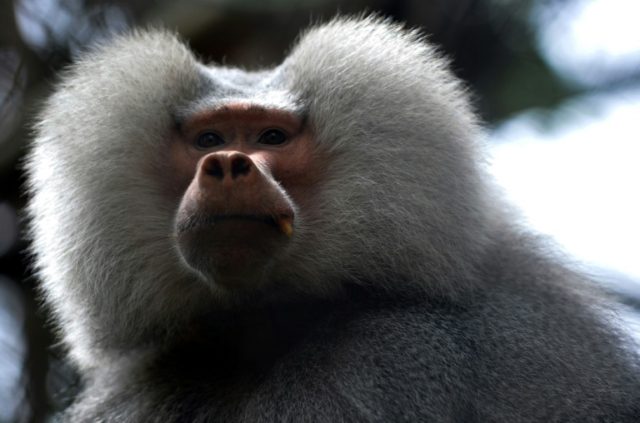Paris (AFP) – Baboons make sounds that are similar to the vowels a,e,i,o and u, researchers said Wednesday, suggesting that some monkeys have had the physical capacity for language for millions of years.
The findings in the journal PLOS ONE add a new dimension to the long-running debate over how language began and evolved, by showing that baboons possess a tongue and larynx that allow them to make a series of vowel-like sounds.
“This is the first time we have shown this in a non-human primate,” said co-author Joel Fagot, a researcher at France’s National Center for Scientific Research.
“It suggests that human speech has a very long evolutionary history,” and arose long before modern man, he told AFP.
Many scientists believe that language originated relatively recently, within the last 70,000-100,000 years, said a statement from CNRS.
But the current study suggests that the articulation skills for speech may go back as far as 25 million years, to the last common ancestor shared by humans and monkeys, known as Cercopithecoidae.
Some researchers have argued that non-human primates — along with Neandertals and human babies until age one — were unable to make differentiated sounds necessary for language because their larynx was situated too high.
To test this theory in baboons, researchers analyzed more than 1,300 vocalizations made by 15 Guinea baboons, both male and female, who were living at a primate center in Rousset-sur-Arc in France.
Researchers found that sounds comparable to the vowels a,e,i,o,u were detectable in their vocalizations, whether mating calls, grunts, barks, yaks or the two-syllable sound, “wahoo.”
While it is intriguing that baboons have this capacity, it does not necessarily mean they are able to speak.
Baboons can make noises that sound like vowels — and they can make distinctly different vocalizations for various situations — but they lack the vast array of complex meanings contained in human language.
Other researchers involved in the study came from Grenoble Alpes University, the University of Montpellier and New College, University of Alabama.

COMMENTS
Please let us know if you're having issues with commenting.